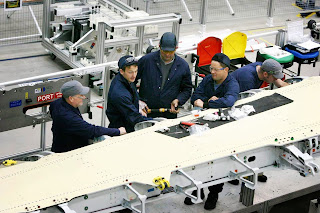Russia and China plan to collaborate on developing a wide-body long-haul passenger airliner, said Russian Deputy Prime Minister Dmitry Rogozin in Harbin, an aerospace-city in north China where he met with Chinese Government representatives.
The project is only financially viable as a collaboration, as Airbus and Boeing already account for 80% of Russia’s long-range passenger aircraft market, Rogozin said.
He offered no indication of the project’s current status, only saying that Russian aircraft design bureau chiefs were due to meet soon to discuss it.
The future airliner must not be a “blind copy of Airbus and Boeing,” Rogozin said.
Russia and China could also start developing and manufacturing a new heavy-lift helicopter with capacity double that of the Mi-26, the deputy prime minister said.
Based on the article “Russia and China to Develop New Airliner” published in RIA Novosti

















































